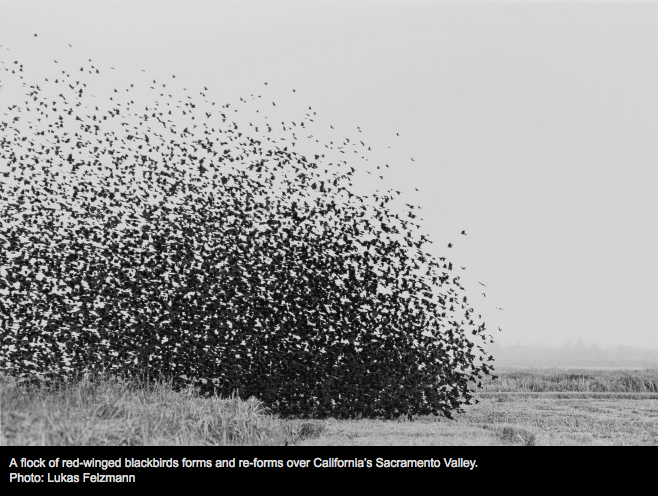
Rules that produce majestic cohesion out of local jostling turn up everywhere.
"Thanks to new observation technologies, powerful software, and statistical methods, the mechanics of collectives are being revealed. Indeed, enough physicists, biologists, and engineers have gotten involved that the science itself seems to be hitting a density-dependent shift. Without obvious leaders or an overarching plan, this collective of the collective-obsessed is finding that the rules that produce majestic cohesion out of local jostling turn up in everything from neurons to human beings. Behavior that seems impossibly complex can have disarmingly simple foundations. And the rules may explain everything from how cancer spreads to how the brain works and how armadas of robot-driven cars might someday navigate highways. The way individuals work together may actually be more important than the way they work alone."
"Couzin would put groups of up to 120 juveniles into a sombrero-shaped arena he called the locust accelerator, letting them walk in circles around the rim for eight hours a day while an overhead camera filmed their movements and software mapped their positions and orientations. He eventually saw what he was looking for: At a certain density, the bugs would shift to cohesive, aligned clusters. And at a second critical point, the clusters would become a single marching army. Haphazard milling became rank-and-file—a prelude to their transformation into black-and-yellow adults."
"That’s what happens in nature, but no one had ever induced these shifts in the lab—at least not in animals. In 1995 a Hungarian physicist named Tamás Vicsek and his colleagues devised a model to explain group behavior with a simple—almost rudimentary—condition: Every individual moving at a constant velocity matches its direction to that of its neighbors within a certain radius. As this hypothetical collective becomes bigger, it flips from a disordered throng to an organized swarm, just like Couzin’s locusts. It’s a phase transition, like water turning to ice. The individuals have no plan. They obey no instructions. But with the right if-then rules, order emerges."
"Couzin wanted to know what if-then rules produced similar behaviors in living things. “We thought that maybe by being close to each other, they could transfer information,” Couzin says. But they weren’t communicating in a recognizable way. Some other dynamic had to be at work."
Read more at Wired.com
